Web Design 2025: AI, AR/VR, Sustainability, and UX – The Dominant Trends
Explore the top web design trends of 2025: intelligent AI integration, immersive AR/VR experiences, sustainable design practices, and comprehensive UX optimization.

Web Design Trends 2025: AI, AR/VR, Sustainability, and Optimized UX
The year 2025 promises a revolution in web design, driven by technological advancements and changing user expectations. This article will delve into the key trends shaping the future of the web, from artificial intelligence (AI) and augmented/virtual reality (AR/VR) to sustainable design and optimized user experience (UX).
1. AI in Web Design: Automation and Personalization
AI is no longer a distant concept but a powerful tool in the hands of web designers. AI can automate repetitive tasks, freeing up designers to focus on more creative aspects. Furthermore, AI enables unprecedented personalization of the user experience, predicting behavior and delivering content tailored to each individual.
- Automating the design process: AI tools can generate layouts, choose colors, and even write code, significantly speeding up the design process.
- Improving UX: AI can analyze user data to identify pain points and suggest UX improvements. AI chatbots provide 24/7 customer support, improving user satisfaction.
- Creating personalized content: AI can generate content tailored to the preferences and behavior of each user, increasing engagement and conversions.
- Predicting user behavior: AI can predict what users want to see next, allowing designers to proactively deliver content.
Some notable AI tools for web design include: Adobe Sensei, Fronty, and Uizard. Companies like Vinawebapp.com, a leading website design company in Vietnam, are actively exploring and applying AI tools to enhance efficiency and service quality.
2. AR/VR: Rich Interactive Experiences
Augmented reality (AR) and virtual reality (VR) are opening up new possibilities in web design, creating rich and engaging interactive experiences. AR allows users to interact with digital content in the real world, while VR creates fully immersive virtual environments.
- AR in e-commerce: Allows customers to view products in their own space before purchasing, reducing return rates.
- VR in tourism: Allows users to explore tourist destinations remotely, stimulating the desire for real travel.
- AR/VR in education: Creates more interactive and engaging lessons, helping students better understand complex concepts.
Websites using AR/VR often require special hardware (e.g., VR headsets) or mobile applications. However, WebXR technology is helping to bring AR/VR to web browsers, enabling AR/VR experiences directly on websites.
3. Sustainable Web Design: Environmentally Friendly
Sustainable web design is an increasingly important trend, reflecting the growing concern for the environment. Sustainable web design focuses on minimizing the negative impact of websites on the planet.
- Efficient energy use: Optimize images, code, and content to reduce file size and page load time.
- Choose green hosting: Select hosting providers that use renewable energy.
- Minimalist design: Avoid unnecessary decorative elements to reduce the amount of data to download.
- Use system fonts: Avoid downloading custom fonts, which helps reduce file size.
Vinawebapp.com always emphasizes sustainable web design, advising clients on website optimization solutions to minimize environmental impact. For example, Vinawebapp.com encourages clients to use compressed image formats and lazy loading techniques to improve performance and reduce energy consumption.
4. UX Optimization: Personalization and Accessibility
User experience (UX) continues to be the most important factor in web design. In 2025, personalizing the experience, optimizing page load speed, accessibility, and designing for mobile devices will become more important than ever.
- Personalize the experience: Provide content and interfaces tailored to the preferences and behavior of each user.
- Optimize page load speed: Ensure that the website loads quickly to avoid frustrating users.
- Accessibility: Design a website that is easy to use for everyone, including people with disabilities.
- Design for mobile devices: Ensure that the website works well on all mobile devices.
5. Examples and Case Studies
Many companies have already begun implementing new web design trends. For example, some e-commerce websites are using AR to allow customers to view products in their own space before purchasing. Travel websites are using VR to allow users to explore tourist destinations remotely. And many websites are adopting sustainable web design practices to minimize their environmental impact.
Advantages: New web design trends can improve user experience, increase engagement, and reduce environmental impact.
Disadvantages: Implementing new web design trends can be expensive and complex. It sometimes requires special hardware or expertise.
6. Advice for Web Designers
To succeed in the field of web design in 2025, designers need to:
- Stay up to date with the latest trends: Read blog articles, attend conferences, and follow industry experts.
- Experiment with new tools and technologies: Learn how to use AI, AR/VR, and other technologies to improve your designs.
- Focus on user experience: Always put the user first and design websites that are easy to use and engaging.
- Pay attention to sustainability: Design environmentally friendly websites.
Vinawebapp.com also offers training and consulting services for web designers who want to improve their skills and knowledge of the latest design trends.
7. Conclusion
Web design in 2025 will be shaped by AI, AR/VR, sustainable design, and optimized UX. Web designers need to familiarize themselves with these trends to create modern, engaging, and environmentally friendly websites. The future of web design is a promising one, where technology and creativity combine to create better online experiences for everyone.

